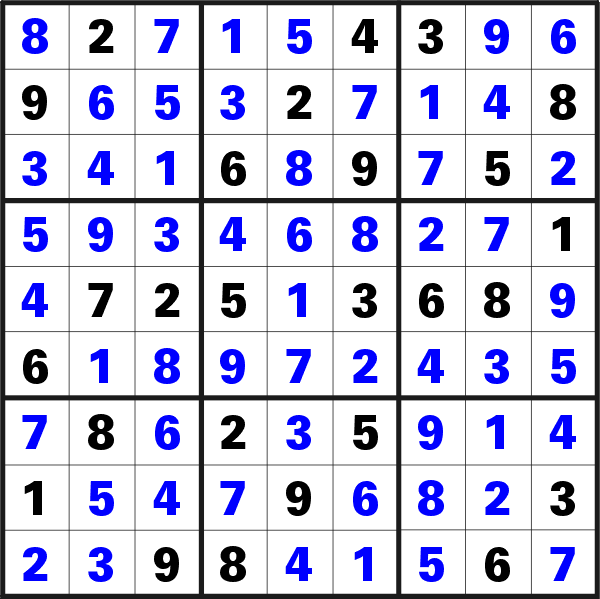The Rules of Sudoku
Although some Sudoku puzzles may take a lot of time and concentration to find their solution, the rules for solving them are very simple. Maybe this is one of the reasons that make Sudoku such a great game.
The sudoku grid is composed of 9 rows, sometimes labeled 'A' to 'I', 9 columns labeled 1 to 9 and 9 boxes usually marked by heavier borders.
A sudoku puzzle is solved when all the grid cells have been filled with numbers from 1 to 9 according to the following three rules:
- Each row must contain all numbers from 1 to 9.
- Each column must contain all numbers from 1 to 9.
- Each box must contain all numbers from 1 to 9.
It follows that any single number may appear only once in the same row, once in the same column and once in the same box, or in other words no number may appear more than once in a row, in a column or in a box.
See the following puzzle solution for an example:

The unsolved puzzle showed only the givens (the numbers in black). The numbers in blue represent the solution.
As can be seen in the picture, every one of the 9 rows of the grid contains all numbers from 1 to 9 and, of course, no number is repeated.
The same can be said for every column, and every box.